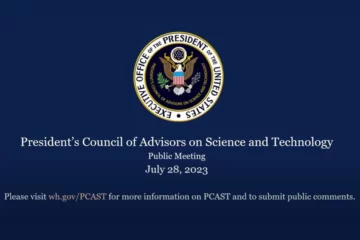At June’s World Patient Safety, Science & Technology Summit, our CEO Dr. Michael Ramsay shared an optimistic perspective about the progress which can be made in patient safety in the next five years through data transparency and evidence-based medicine.
“I think things are going to happen remarkably fast,” he said. “I do not think in 10 years’ time we’ll be sitting here thinking, ‘Well we still haven’t made much progress.’ I think we will, and we’ll have data to prove it.”
Together, we can end the preventable tragedies which are still all too prevalent in our healthcare system. As a Foundation, we have four major strategies which we believe can avoid preventable patient harm and help healthcare organizations reach Zero.
Actionable Evidence-Based Practice Blueprints
Anthony Staines, Patient Safety Program Director at the Fédération des hôpitaux vaudois, Switzerland, addressed attendees at a patient safety summit with one of healthcare’s most uncomfortable truths – much of the knowledge we need to improve patient safety is already out there.
“There are many prevention and mitigation solutions, but they are only partly or unsystematically applied,” he said. “Science has brought us an expanding body of knowledge and evidence to prevent harm. The trouble is that a lot of it does not reach the patients.”
As a Foundation, we are trying to play our part in bridging that gap by disseminating Actionable Evidence-Based Practice blueprints which have a proven track record of eliminating harm.
These step-by-step guidelines simplify understanding of the gold standards of care for many leading causes of preventable harm and death, from healthcare-associated infections to patient falls, pressure ulcers, medication errors, and communication errors. We also ensure they are regularly updated as soon as new data becomes available to help medical personnel remain abreast of the latest understanding of best practices.
We believe these guidelines will empower hospital staff to improve patient outcomes and create an organization recognized as a haven of safe care. The adoption of these solutions has also been encouraged by the President’s Council of Advisors on Science and Technology (PCAST) – an advisory group of leading scientists and engineers who report directly to the U.S. President. PCAST described patient safety in a recent report as an urgent national public health issue. They emphasized that research conducted by both major academic and governmental entities has indicated the importance of following evidence-based practices in eliminating harm.
Data Transparency
To quote the former chief operating officer of Meta Platforms, Sheryl Sandberg – ‘We cannot change what we are not aware of.’
This statement has never been truer than in the field of patient safety. It is paramount that we know the actual number of patient harm events for us to be able to design better solutions for stopping harm and anticipating preventable errors before they happen. Right now, we believe that the annual estimates of preventable patient deaths are just the tip of the iceberg. Few realise, but these figures are based on extrapolations of harm, rather than hard, factual data.
Peter Ziese, chief medical officer, and global head of medical strategy & innovation at Philips, shares one of our core visions, which is that in the coming years, artificial intelligence and electronic health records can lead to algorithms capable of predicting harm. But this can only be possible if healthcare systems are more transparent regarding errors and are willing to share data which allows for the comparison of patient outcomes.
PCAST has also described data transparency as an absolute necessity, recommending that information regarding adverse events should be made publicly available on an annual basis, with immediate effect. They stated that greater data transparency around medical errors is particularly imperative as it could go a long way towards reducing the many disparities which still plague healthcare.
“We need to be very, very transparent, first and foremost, with the information we have,” says Ziese. “The good, the bad, and the ugly.”
Aligned Incentives and a Value-Based Model
One of the major limitations of the current fee-for-service payments structure within healthcare, is that it does not incentivize providers to make patient safety a priority at every single stage of the patient journey.
The current structure fails patients on a colossal scale. As things stand, healthcare organizations can potentially be compensated for any extra service they have provided, even though extra testing, procedures and a longer length of stay may result from a preventable medical error. This system has resulted in hundreds of thousands of needless deaths, endless lawsuits, and millions of dollars in medical liability payouts.
Therefore, we must restructure our healthcare and insurance systems to follow a value-based model, where providers are incentivized for the quality of care they give.
This would be a systemic payer policy which actually rewards our healthcare systems for taking reasonable precautions, implementing the recommended evidence-based practices, being transparent with regards to harmful events, and promoting a culture of safety.
But this is necessary to drive change. If we expect excellence in care, we need to implement a payments model that rewards quality rather than quantity. If a patient has an adverse event and experiences harm, even with the use of evidence-based practices, then full reimbursement for care should be given. There must be recognition that many patients are extremely fragile and may suffer a complication, even with the provision of optimal care.
“What we do know is that once patient safety is made a priority by the board, things do improve in these organizations,” says Rachael Fleurence, senior advisor to Dr Francis Collins, science advisor to the President of the United States.
National Patient Safety Board
Patient safety can learn much from the success of commercial aviation in transforming air travel into a mode of transport that is ultra-safe. “Today, you’d have to fly continuously on a commercial flight for over 6,000 years to have a 50:50 chance of injury as a passenger,” says Don Berwick, former administrator of the Centers for Medicare and Medicaid Services. “Compare that with healthcare, where recent research has shown that almost one in every four hospital patients experiences an injury from their healthcare.”
To learn more about how our hospitals can become as safe as aircraft, we are proposing a National Patient Safety Board, modeled on the Commercial Aviation Safety Team. PCAST has also recommended that a multidisciplinary National Patient Safety Team is established to address this very need.
The intention of this board would be to act as an independent agency for investigating major sources of harm and using this knowledge to provide recommendations for preventing future adverse events in a nonpunitive fashion.
Ultimately, we believe that every preventable patient death is one too many. But if we can operationalize these four strategies, then we can get to zero. The four outlined objectives of the Patient Safety Movement Foundation are the only practical pathway to reach Zero harm for patients and healthcare workers, and to restore humanity back to healthcare.





